7 Gracie Square: Review and Ratings
between East End Avenue & FDR Drive View Full Building Profile
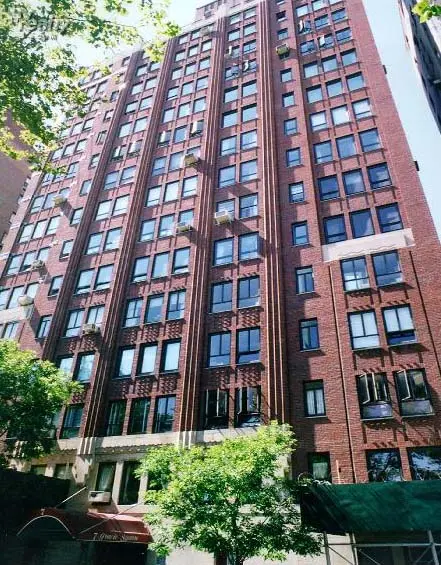

This 16-story, mid-block apartment building at 7 Gracie Square was erected in 1929 and converted to a co-operative in 1945.
It has 43 apartments and was designed by George B. Post & Sons. Mr. Post, who died in 1913, designed many of the most important buildings in Lower Manhattan such as the New York Stock Exchange, the New York Cotton Exchange, the Pulitzer Building, the New York Times Building on Park Row, and the mansions of Cornelius Vanderbilt and Collis P. Huntington.
Bottom Line
This building is very close to two of the city’s schools for girls and has excellent views to the north over Carl Schurz Park, Gracie Mansion and the East River.
It has a spectacular Art Deco entrance.
Description
The short block of Gracie Square that faces the southern boundary of Carl Schurz Park consists of three mid-size luxury apartment buildings.
1 Gracie Square and 10 Gracie Square, which anchor the western and eastern ends, respectively, of the block, both have unusual collage and asymmetric façades and frame this handsome, red-brick apartment building, which has a symmetrical façade.
The building has a lovely sandstone base that is one story high except for around the entrance where it is two stories high. The building has very handsome bronze entrance doors and Art Deco-style lanterns.
In his November 24, 2011 “Streetscapes” column in The New York Times, Christopher Gray noted that the building's double entrance doors and flanking ironwork “are a frenzy of swirling shapes in brass and iron, plated with zinc, nickel and cadmium, populated by gazelles, elephants and sinuous plants.”
“The brass-framed doors,” Mr. Gray continued, are “decorated with tendrils of nickel-plated bronze sprouting from howdahs borne by bronze elephants and coiling to fill the space. Above the doors, a bowed-out tympanum of cadium-coated cast iron showcases two gazelles surrounded by a panoply of spiraling plants, all in a deep, rich silver. Just inside the main doors, the radiator grilles are square-rigged ships of hammered iron plated with nickel….A final touch is on the inner doors: the brass kick plate is cut in the same of a rolling form called a Vitruvian wave, the whole package a perfect demonstration of the metalworker’s art.”
“The maisonette entrance to the left beats, in intricate script, the name Crisp, for this was the project of Arthur W. Crisp, a Canadian muralist who made good, very good, until the Depression hit. Born in 1881, Crisp came to New York around 1900, and studied at the Art Students League. By the 1910's he was getting mural commissions for theaters, institutions and private houses. His private work was free and playful, but his public murals tended toward the conventional; in 1933 Lewis Mumford offhandedly described one as ‘sweet and dreadful. Nevertheless, Crisp did well enough to buy real estate, including some old buildings on far East 84th Street. He brought in early 1928, just before the stubby dead end was renamed Gracie Square. Crisp retained George B. Post & Sons, along with Rosario Candela, and they designed a tepid Art Deco façade of red brick, with vertical runs of brick asset at an angle,’ Mr. Gray continued.
It has four large masonry piers in the center of its façade facing the park andi Its canopied entrance is unusual because it is suspended and has no "legs."
The building has a handsome rooftop watertank enclosure and no sidewalk landscaping and inconsistent fenestration. It permits protruding air-conditioners.
Amenities
The building has a full-time doorman, a gym, maids’ rooms, storage and laundry.
It is pet-friendly.
Apartments
Apartment 3A is a two-bedroom unit that has a 9-foot-long entry foyer that leads to a 21-foot-long living room with a fireplace that connects to a 17-foot-long library. The foyer also leads to a 15-foot-long windowed dining room next to a pantry and a 10-foot-wide kitchen and a 10-foot-wide maid’s room.
Apartment 5B is a two-bedroom unit that has a 17-foot-long entry foyer that leads to a 21-foot-long living room with fireplace and a 14-foot-long windowed dining room next to a 7-foot-long pantry and a 10-foot-long kitchen.
Apartment 15C is a two-bedroom unit that has a 12-foot-long entry foyer that leads to a 7-foot-wide reception area next to an 18-foot-long living room with fireplace that connects to a 14-foot-long windowed dining room next to a 17-foot-long kitchen and a 7-foot-long staff quarters.
The maisonette is a three-bedroom unit that has a long foyer that leads past the living room to the kitchen that opens onto a courtyard and a den/office area and a study/playroom.
History
The building was taken back by a bank in 1935 but the tenants bought it in 1945 for $500,000.
In the mid-1950's, the façade needed substantial repair because of water damage and, in his December 26, 1993 “Streetscapes” column for The Times, Mr. Gray noted that “anyone who came to New York after 1960 would have known 7 Gracie only with its strange, boxy aluminum cladding running in wide strips up the window bays, something like a cheap rocket ship in a Buck Rogers serial.”
The façade was rebuilt in 1993.
A former resident was Robert Moses.
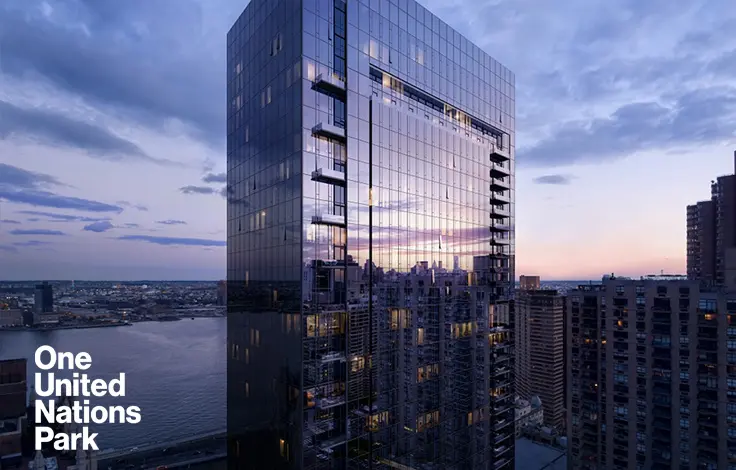
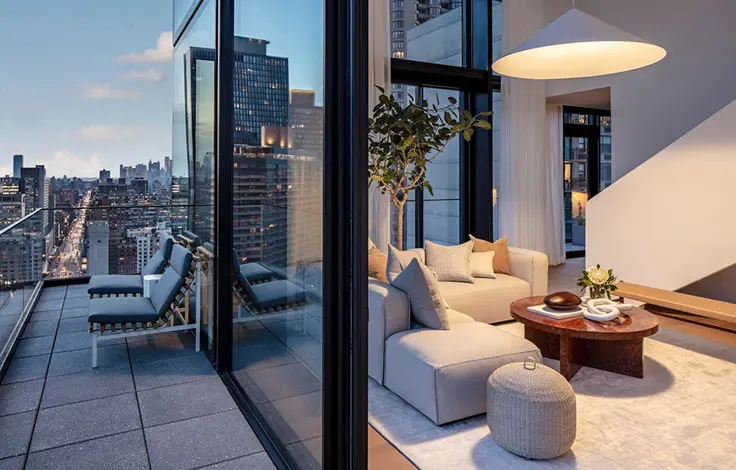
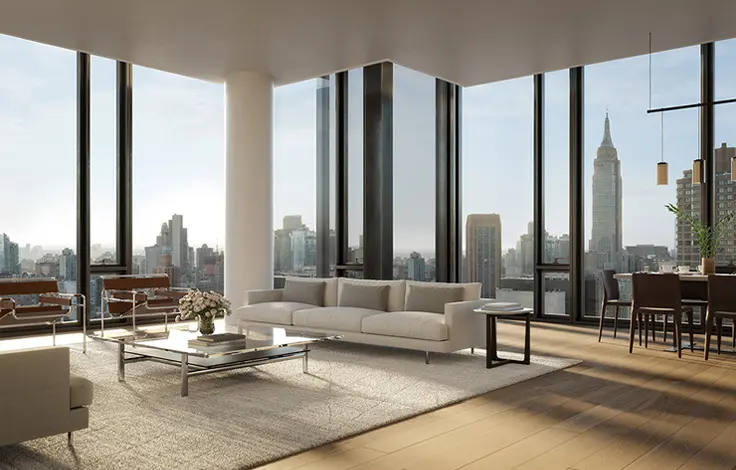
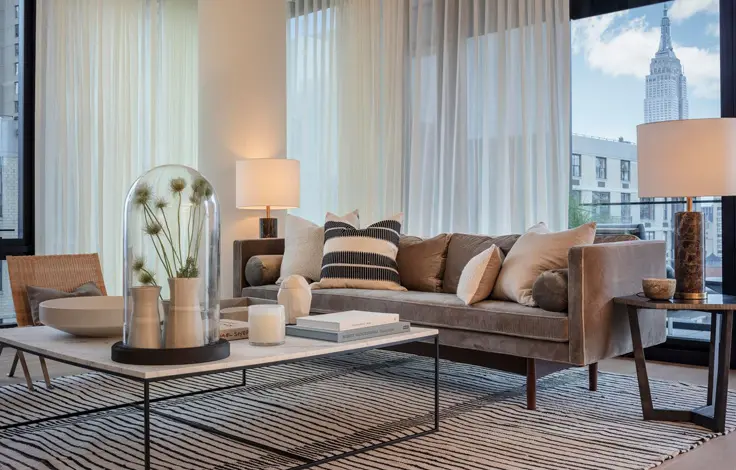
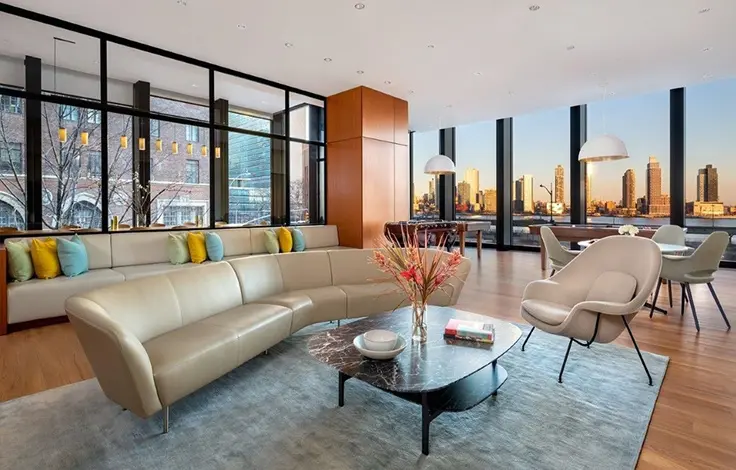
 6sqft delivers the latest on real estate, architecture, and design, straight from New York City.
6sqft delivers the latest on real estate, architecture, and design, straight from New York City.
